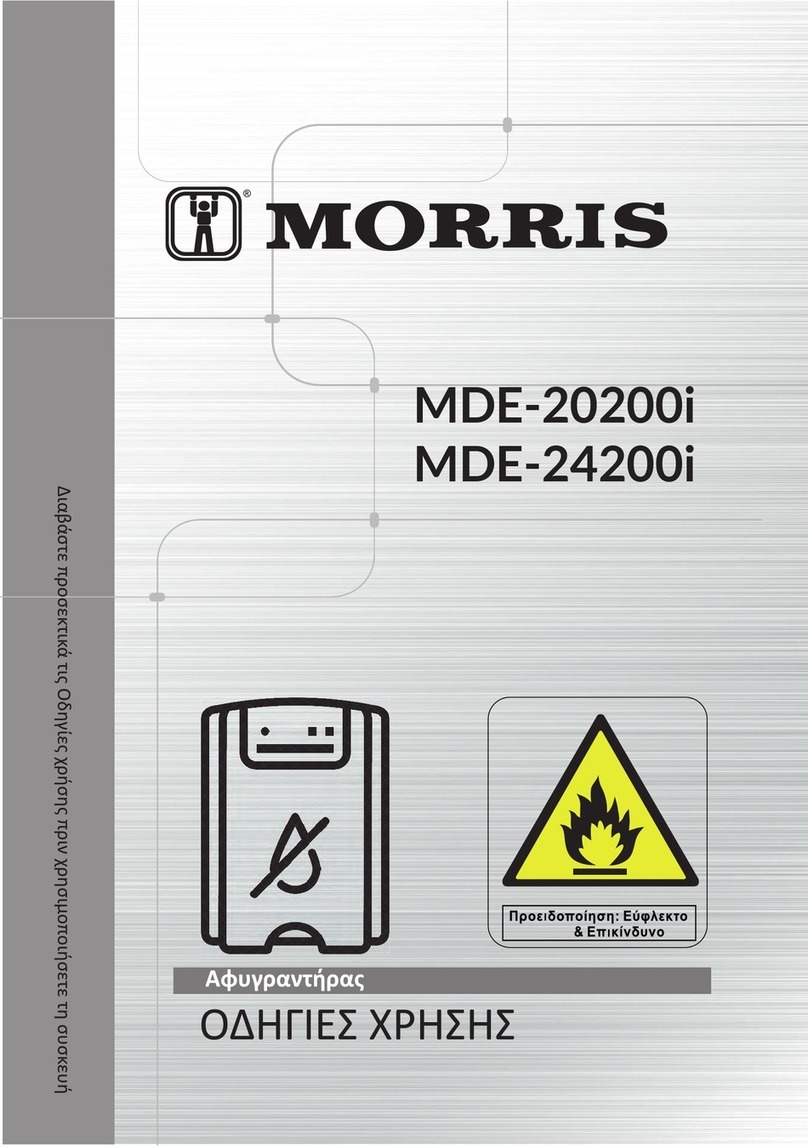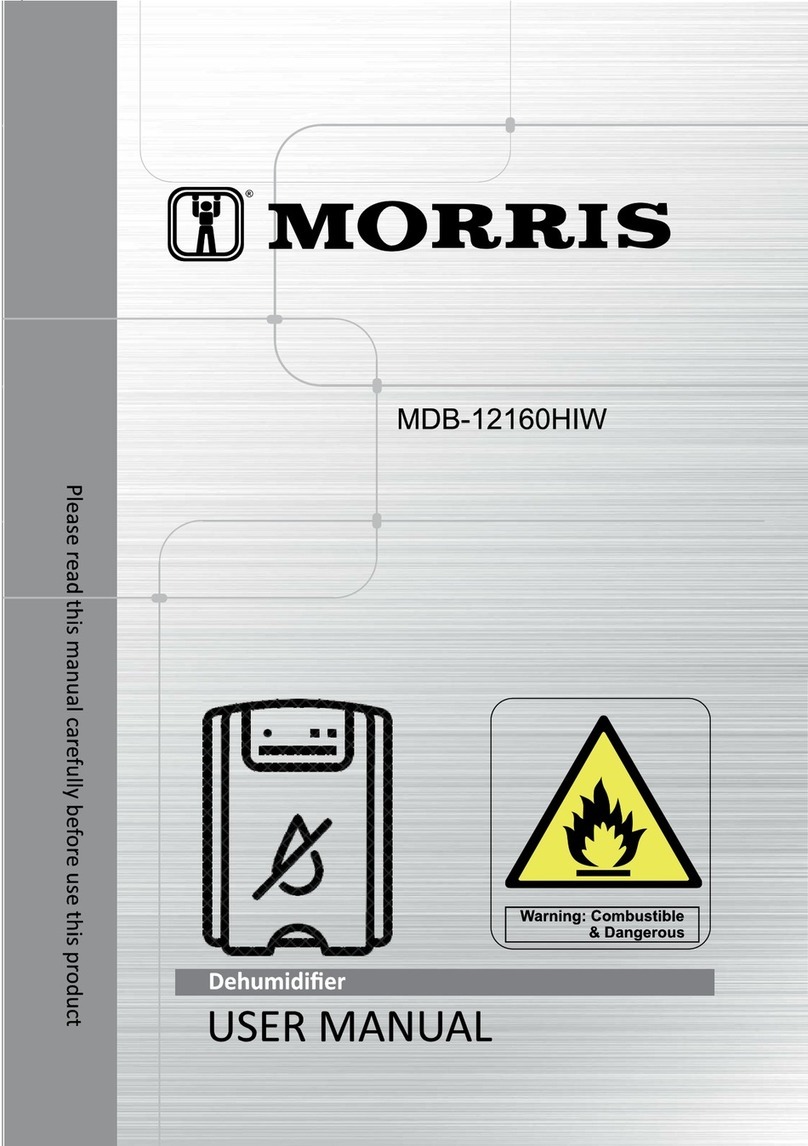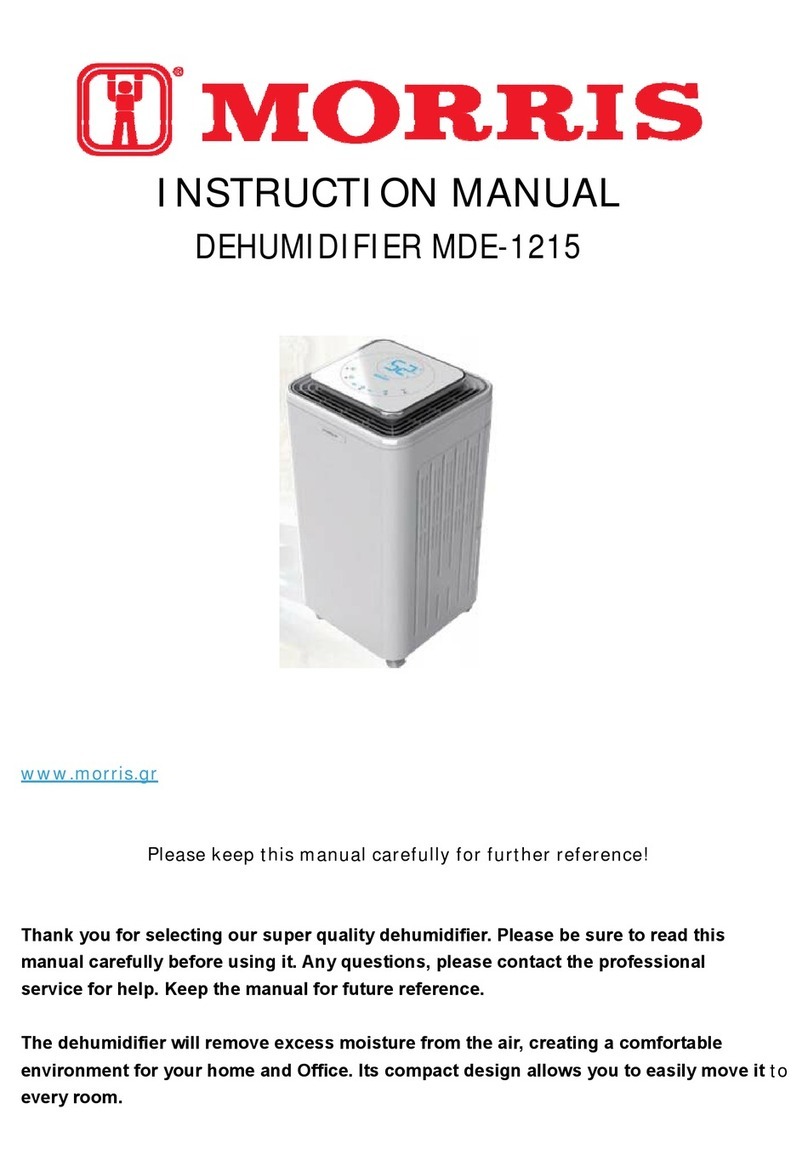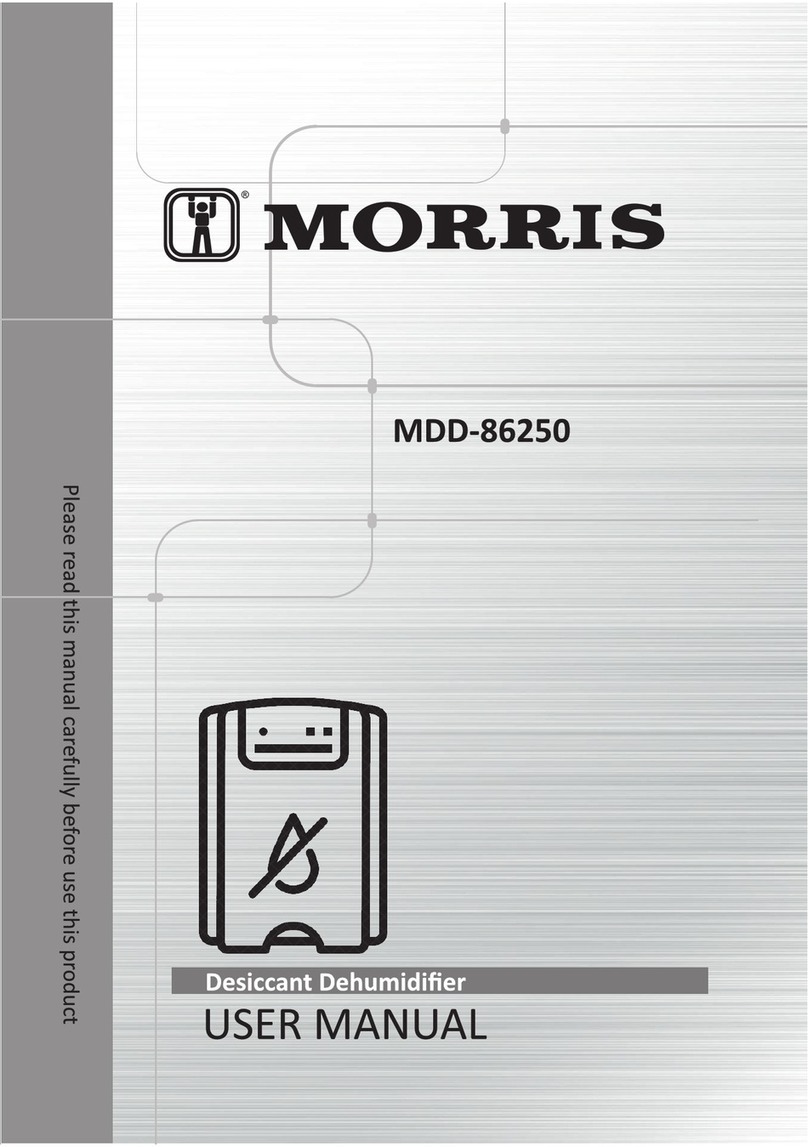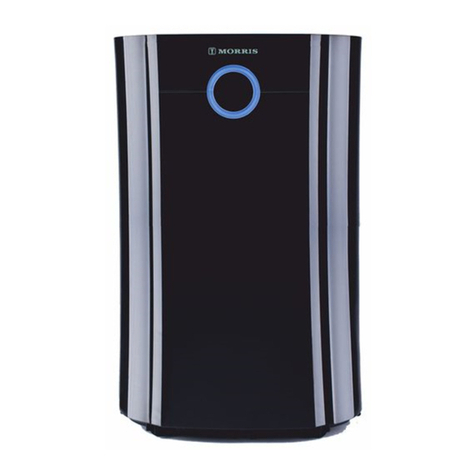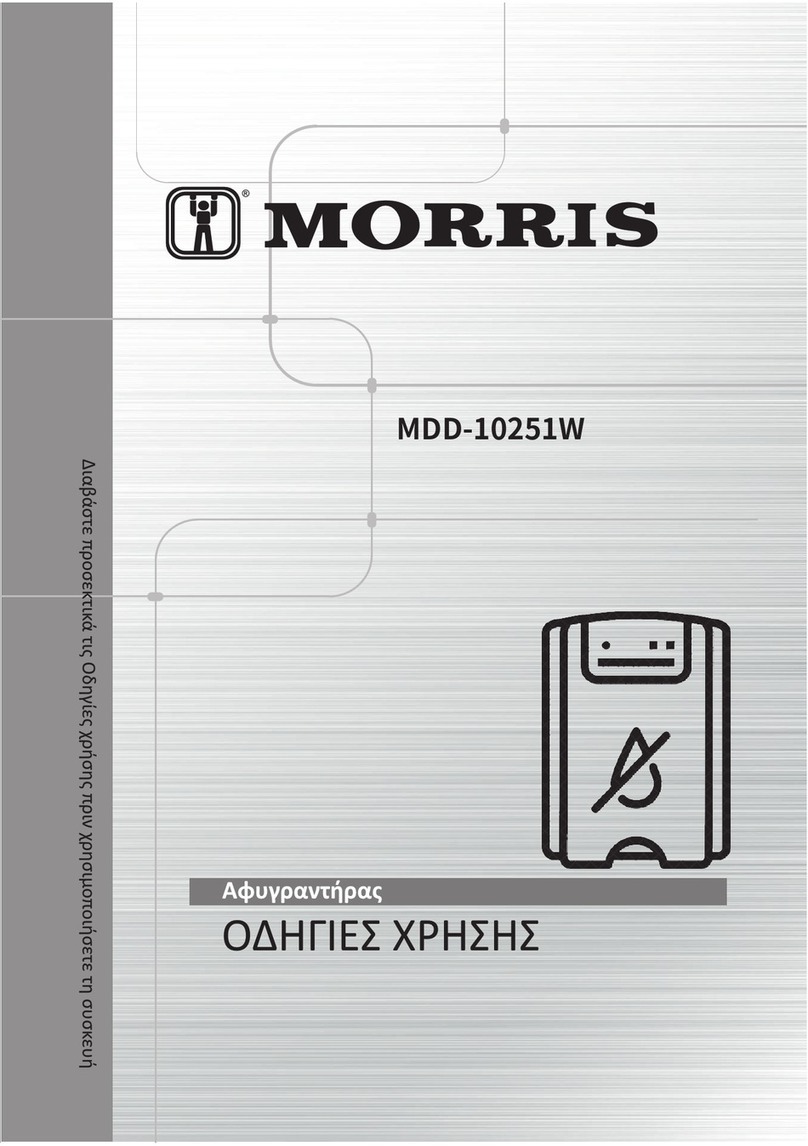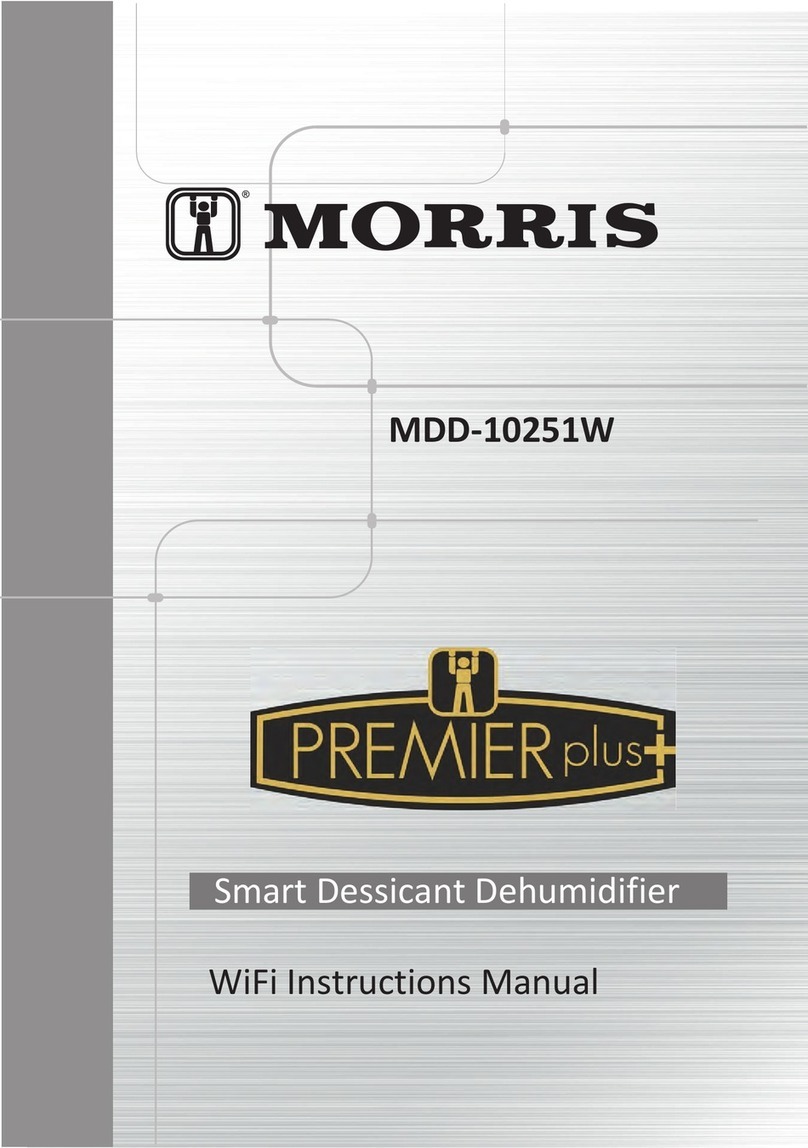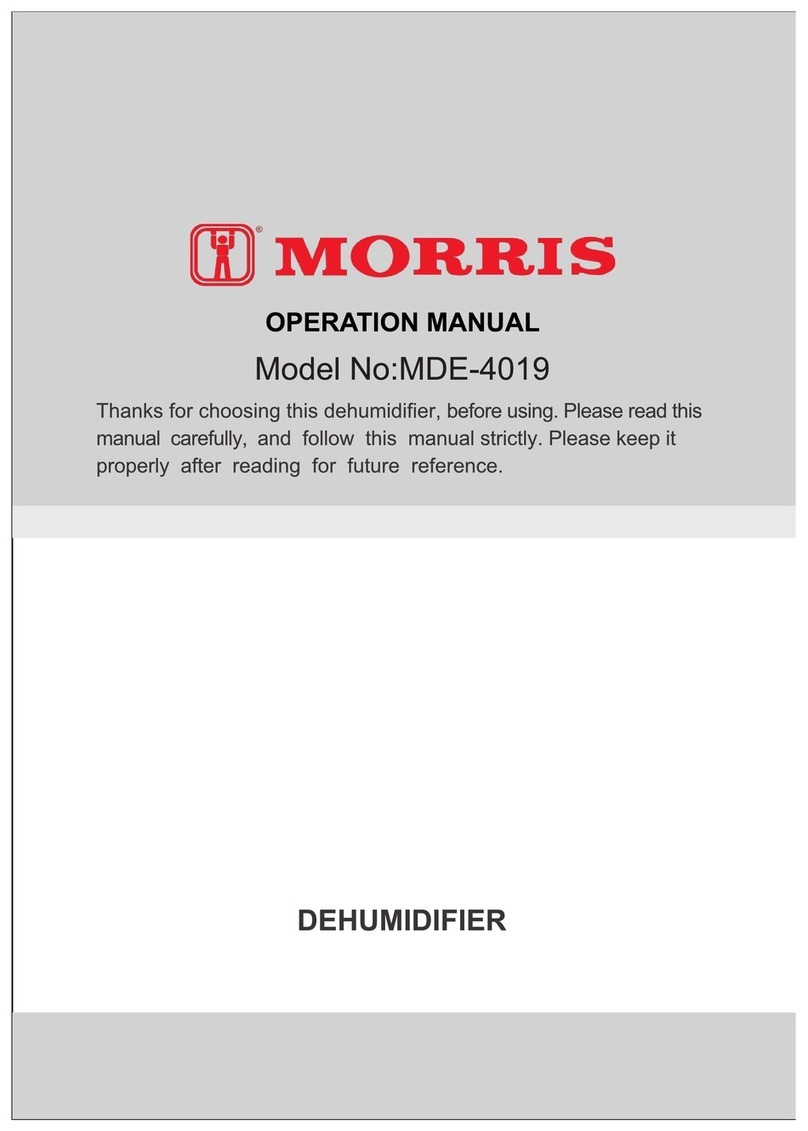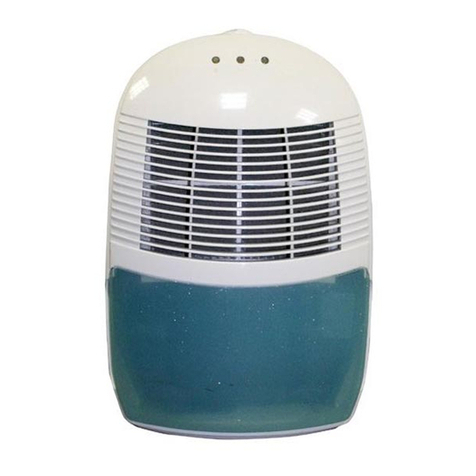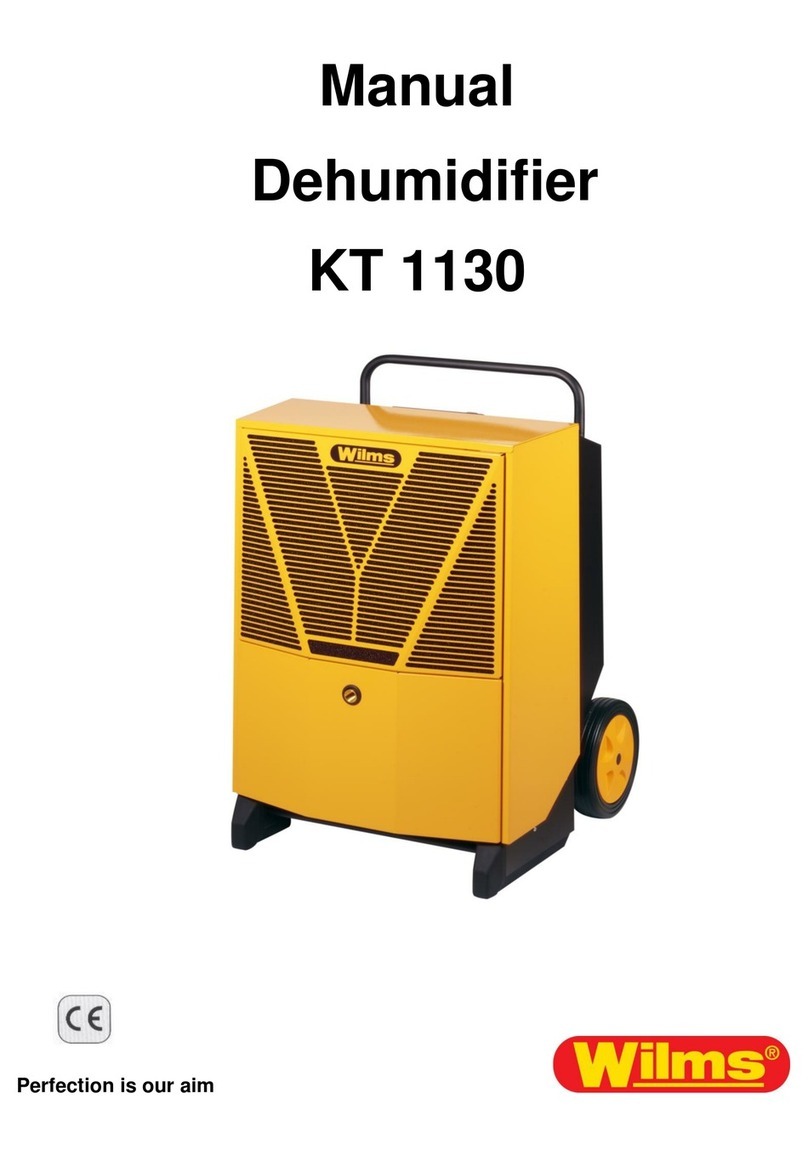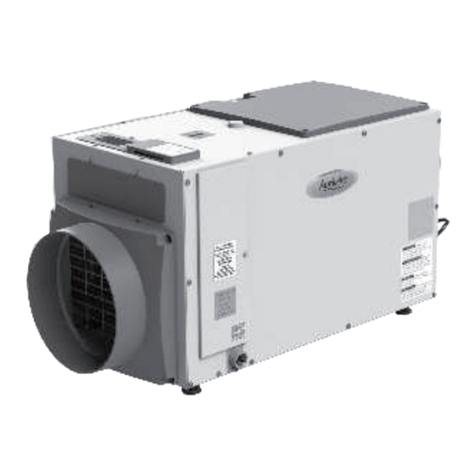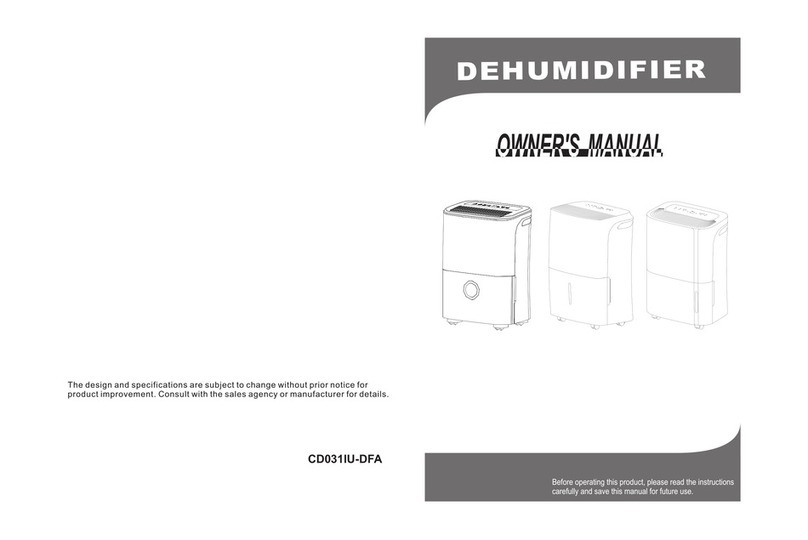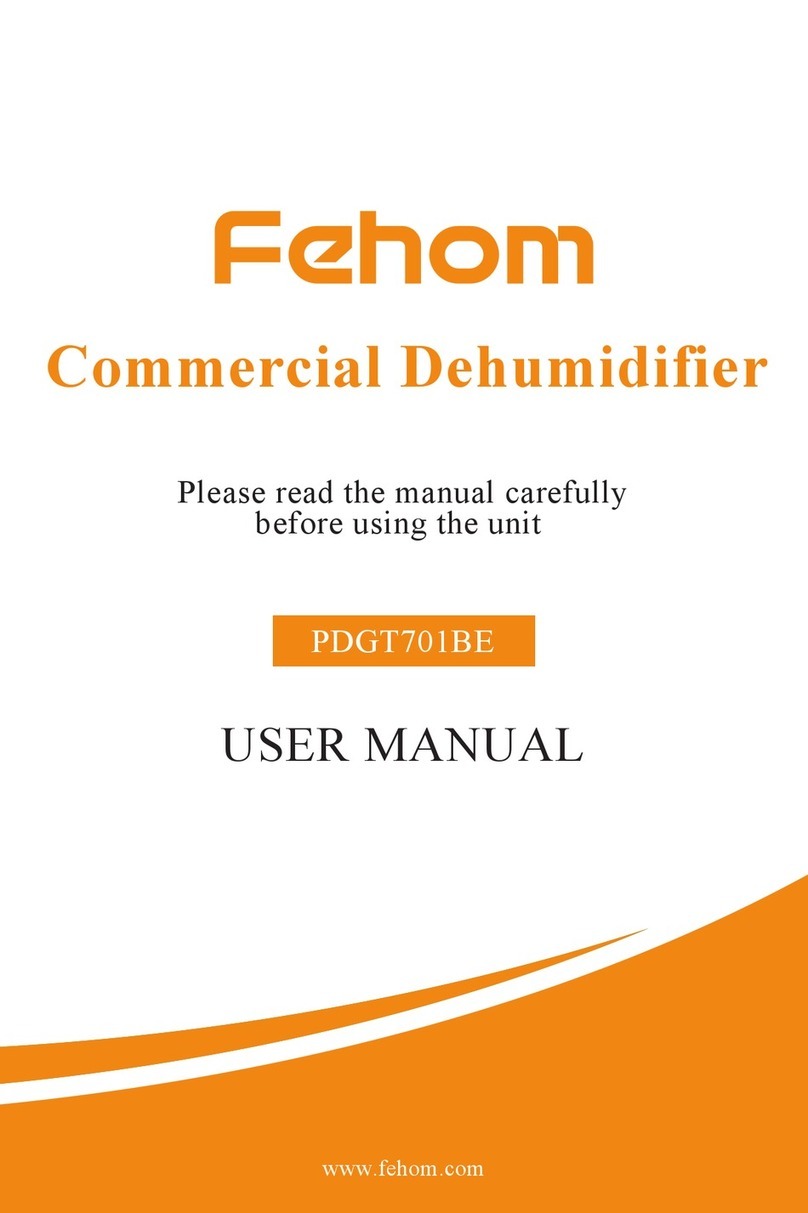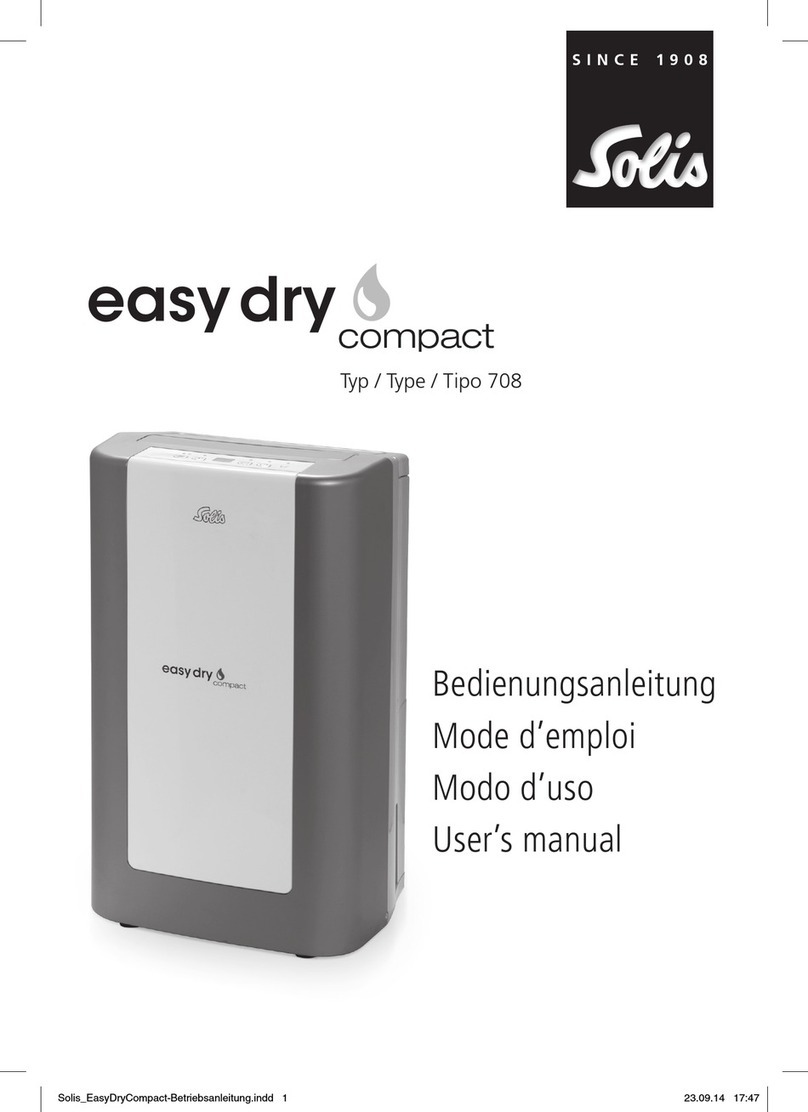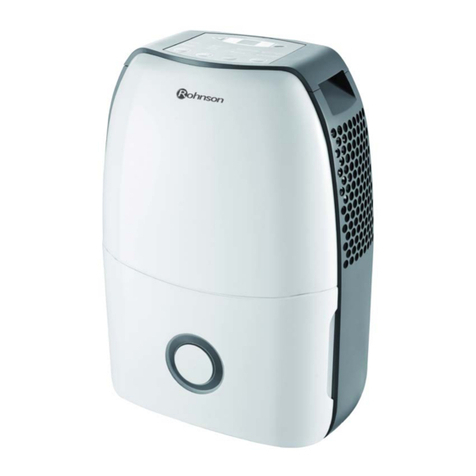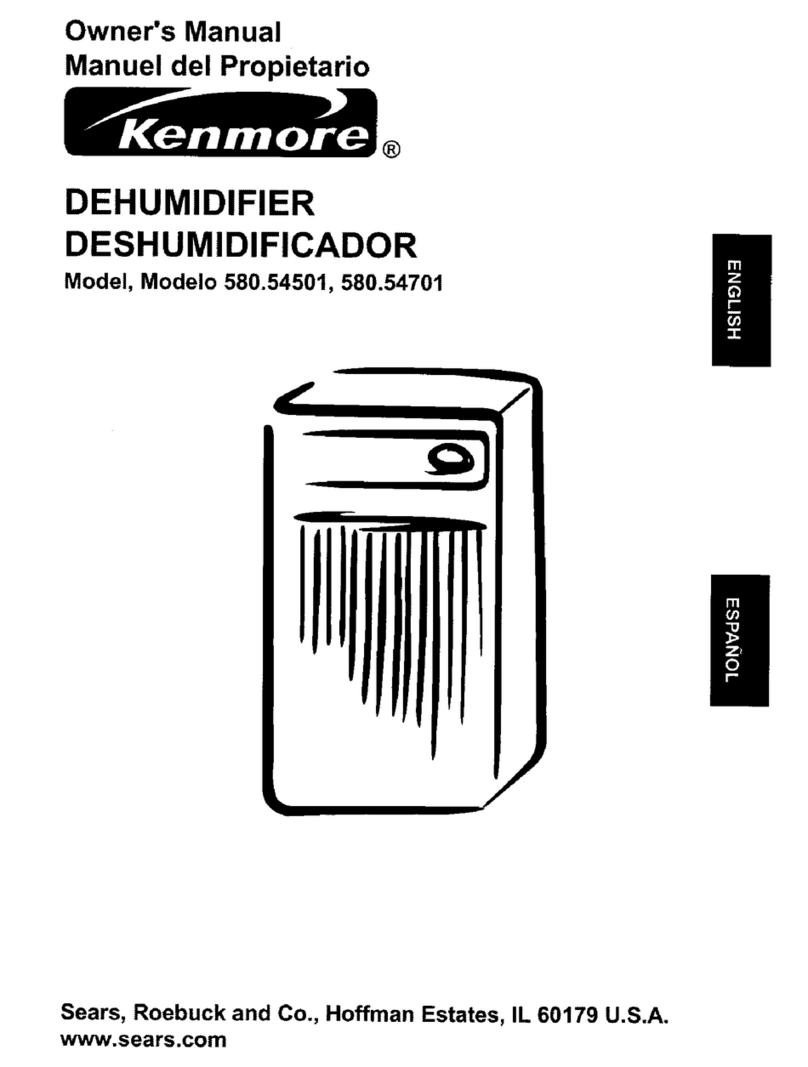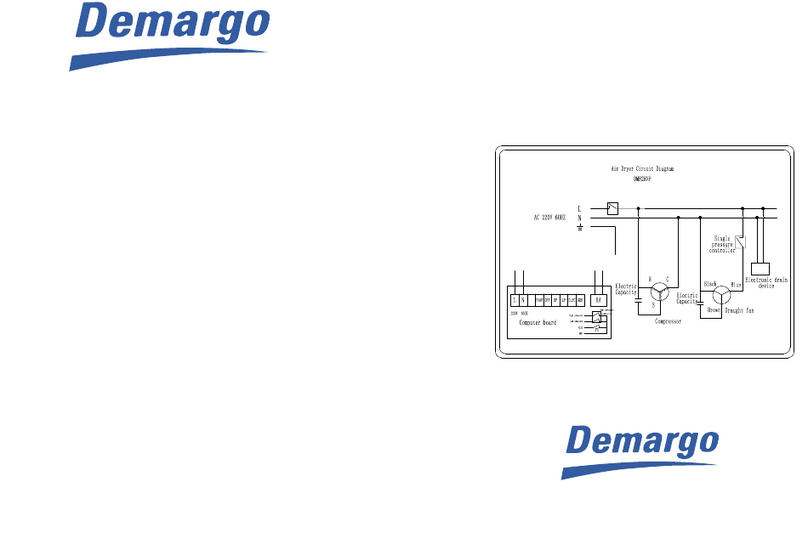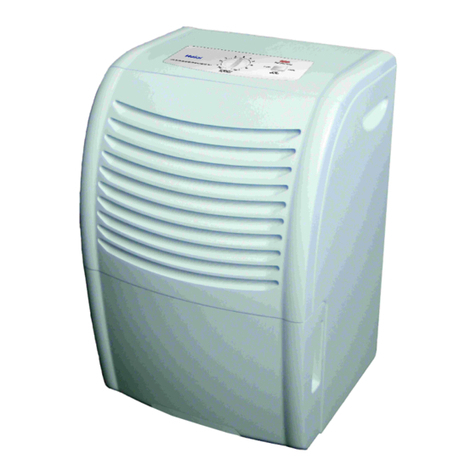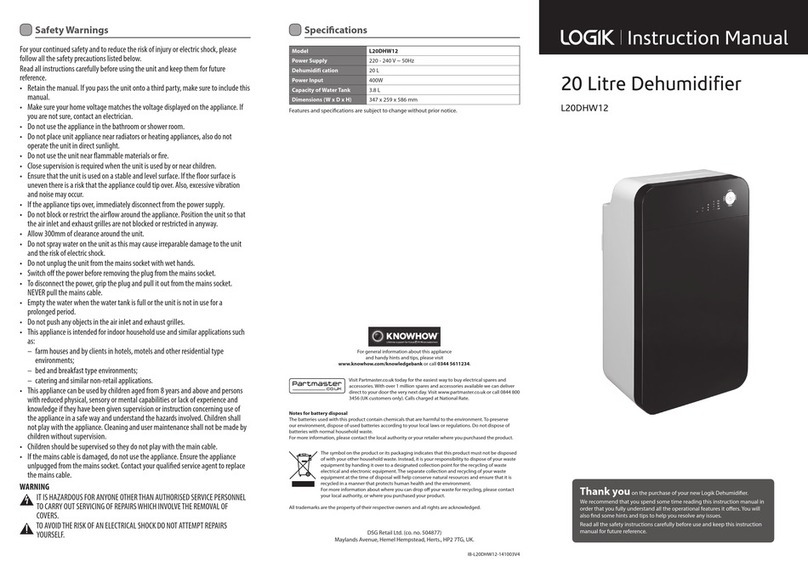
HUMIDITY SETTING
Press UP/DOWN key to select the desired relative humidity level, default relative
humidity is 55%. If relative humidity 35% is selected, the compressor will not
stop until the water tank is full.
TIMER (timer function)
Press timer to program time. "TIMER" light comes on while timer is being
programmed. Before programming make sure that the timer function has not
been activated(the light must be off). The following timer programs are available
a) Delayed power-on function(the appliance is in stand-by status) USE key "UP"
and "DOWN" to set the time period (1~ 24 hours), the appliance will start once
time reaches the set value.
b) Delayed power-off function (whilst the appliance is running), the appliance will
stop once time reaches the set value.
LAUNDRY
Press this button, the function is turned on or off, the dry mode indicator is on/
off. After the function is turned on, the front panel humidity display shows 35%
and the humidity is not adjustable; In this mode, the compressor does not stop and
continues to run until the water tank is full or you turn o ffthis function.
OSC (Oscillating function)
Press the "OSC" key, the louvers will swing up and down between 45°and 90°. When the
key is pressed again, the louvers wil remain in their current position.
*Press and hold this button for 3 seconds to enter the child lock mode, the child lock
indicator lights up, and other touch button touches are invalid
; after pressing and
holding this button for another 3 seconds, the child lock indicator light is off, and
other touch button touches are effective.
UV&ION
UV function and ION function are controlled by one key. Press the key and select the
related function, the related light will come on.
INTELLIGENT DEFROST
The appliance will defrost automatically as programmed once the coil sensor
detects that temperature is too low, and the defrosting indicator will light up
at the sametime. Once defrosting has finished, the appliance will recover to its
previous running mode.
TANK-FULL
If the water tank is full, the indicator light comes on and flashes.
Carbon filter (Air purification function)
Take out the carbon filter from the bag and insert it in the filter holder. It is suggested to
hoover the carbon filter every 2-3 weeks and change them every 3-6 months to always
keep the room fresh and odor free.
Humidity Level & Timer 2 digit display
The led indicator performs the following functions:1. When the unit is plugged in, it will
indicate the room humidity level 2. When the humidity level is selected, it will indicate the set
humidity 3. When the start/stop timer is programmed it wil show the set timer.
Notes:When humidity level is outside the normal operational parameters it will show LO/HI.If
ambient humidity is lower than 20%, it will show "LO". If ambient humidity is higher than 90%, it wil show "HI".
